LCD Digital Circuit Tester

Thank you! Your comment has been submitted successfully. You should be able to view your question/comment here within a few days.
Error submitting comment. Please try again momentarily.
- All Info
- Reviews (22)
- Q & A (0)
- Videos (2)
- Photos
Performance Tool Electrical Tools - PTW2992
- Testers
- Circuit Tester
- Performance Tool
Features:
- Economy LCD Circuit Tester with LED back light
- Ideally used to detect power, voltage, ground, and circuit integrity
- Surge protected circuitry displays DC voltage from 3V to 48V (±0.3V accuracy)
- Conduct circuit tests with increased accuracy and ease
- LED indicates RED for power or GREEN for ground
W2992 Performance Tool LCD Digital Circuit Tester
W2992 LCD Digital Circuit Tester
California residents: click here


Videos are provided as a guide only. Refer to manufacturer installation instructions and specs for complete information.
Video Transcript for Performance Tool LCD Digital Circuit Tester Review
Hi, they're hard workers! Today we're going to be taking a look at Performance Tool's LCD circuit tester. To give you an idea of how your circuit tester works, it has LEDs in here that'll light up when both power and ground is present. You'll have to clip your probe onto either power or ground. The, the clip end here, we've got that attached to the ground side of our battery. And then with the probe end, instead of the clip side, you'll touch this to your other circuit. And if there is the opposite there it'll light up.
So currently you've got ground on the clip side and our probe, or touching on the positive of our battery post and it lights up red. It also gives us a voltage reading on there, raking in about 12 and a half volts. Now we could swap this and hook it up the other direction. So we're hooking our clip onto positive, and then we're going to take our probe and touch it to ground, and it also lights up. But you will notice now that it's lit up green, letting you know that your probe side is touching on ground and you have power present on your clip side.
You'll also get a voltage reading there. And that's really nice that you get a voltage reading there, because if you have any drop across your circuit, you can help detect that as well. So you can kind of check out the integrity of your circuit while doing this. It's kind of a special thing here. Most of your test lights will just have a light on it.
It's really nice. And you've got that volt meter on there as well to get additional information. For example, currently now we're reading about 12 and a half volts, but if I was checking this further on down the circuit, and if we had some corrosion in that circuit, I may only read 12.1 volts further on down that circuit. And I know, Hey, the voltage has dropped from what it is here at the battery by a few tenths of a volt down there. Maybe I should look for a little bit of corrosion or a bad connection at that point.
And it may even drop even lower. You may only have like 10 or 11 volts and if you're checking it like that, then there's a good chance that you're finding, Hey, this is probably why I'm finding where my issue is. My item wasn't working. I was checking my circuits along the way, and I see a drop in voltage that's excessive, check your circuits there. So we're gonna go ahead and go through some examples of common uses of this and some, little bit more in depth tests that you can perform with a test light. Often people will use these to test the circuits at the back of their vehicle, and they usually do this when they plug up to your trailer and you find like, Hey, I don't have taillights or I'm missing a turn signal or something like that. Well, rather than immediately digging in and trying to fix some wires, let's figure out, Hey, where's the issue at is the issue on my vehicle side or is the issue with my trailer. That's where I like to start. So I've gone ahead and turned on the hazard lights in the vehicle, as well as the tail lights. And that should activate all of our signals. So we're going to take the clip here. We're gonna hook this on ground, which is the exposed stud there, so just flipping that on there, kind of putting the rubber boot off to the side here a little bit to help keep me from touching it. And now we're just gonna check our circuits. So here, we've got 12 volts here at the back. So we know that our taillight circuits working, and we've got a flashing signal there giving us our 12 volts so we know that that's working. And if we look at here, the color of the wire coming in, that's yellow, so that's gonna be our left turn signal. And then our right turn signal is the green wire. When we checked this one as well, we'd get our light lighting up and giving us our 12 volts. So we know that our vehicle side here is working properly. And this will also work when testing your six and seven way connectors as well. You just need to pay attention to what the circuits are. So for the four-pole ones, we we're able to turn on tail lights and hazards to get all these operational. With a seven way, you'll need a brake controller plugged in and somebody operating the output of it in order to be able to test that circuit, your auxiliary circuit should normally just have power on it all the time, but sometimes you have to start the vehicle to get the auxiliary circuit to come on. So just pay attention to those. So that way you know that you're getting the output back to your connector when you're checking, just verify that your vehicle has that particular output. In this instance, if we had an issue with our trailer though, we know that our vehicle's okay, so we can go ahead and button up this side. We don't need to diagnose anything over here. We would then turn to our trailer and try to figure out, okay, why, why is that signal not working So then we would do that from there. So here, we've got a scenario for you where we're going to show you a short to ground and how to diagnose it. Currently, I've got a scenario set up, so our board here, this is the load for our device. It's going off right now. And this just normally comes on when you put your vehicle in reverse. So let's say in our scenario, we put our vehicle in reverse, but instead of this, coming on, nothing happened because this was what a short to ground would be like, if there was a bare spot on your wire, it would spark a little bit. And what would eventually happen, it was over, it would overload the circuit and then it would pop your fuse. And if we take a look here, we can see that the fuse has blown. It's now open. So this was a temporary thing that we just put in there in place. But if you've got a short to ground in your trailer, it's likely always gonna be grounded out like that. So let's just go ahead and set that scenario up. So now we're in the current faulted state where we had started where the board was working, was the proper fixed state. We simulated a short to ground. So we're just gonna put this short to ground back so I'm stuffing that there. I'm just stuffing this in here just for simulation purposes. So now what's going to happen next is you go, oh, I got a blown fuse. Okay. Well, my fuse is blown. I'll just put another fuse in. And when you go to put another fuse in, you got to pull it back into reverse or operate, whatever accessory you're planning on operating, and it just pops the fuse again. Oh no. Well now, you know, you've got a real problem you gotta solve. Your test light can be a real wonder in these scenarios cause we can take that fuse out of there, Instead of wasting a bunch of fuses, what we can do is we can complete the circuit with our test light. And normally when you're doing this, you're probably gonna have to take a, a paper clip or something like that to clip into the other ends. And you can poke it down in there. So I'm gonna grab one of those real quick so we can mock that up. So now what we've done is we've taken our test light and we put it in place where the fuse used to be. The probe is in one prong, and then we used a paper clip and clipped it onto the clip side of the other side of the test light and put that in the other prong. And what you'll see there is that our test light has lit up. So what you'll want to check now is where, we know that this light's only gonna light up. if we've got a complete circuit that has a path all the way from power, all the way to ground, and then it'll light that light. So at this point you can put it in the particular state in which you're trying to activate, whatever it be, a light or whatever you're putting it in reverse to activate a light, go ahead and do that. We can see that's lit up. And now you would just start disconnecting circuits until you figured out an isolated where the short was. One of the things I like to do first, if it's easy to get to, is to take away the ground at the very end of the circuit, because our test light doesn't take very much current to amp, to light up. So if you think it's like a bulb or something, it can actually go through the bulb, so let's make sure that particularly at the ground at the very end of the circuit, So this is the load at the end. This is normally like a brake light bulb or something. You have your power that goes to the bulb or whatever your load is, and then the other side just goes right to ground. Well, if we remove this ground here at the end, what should happen is your test lights should turn out if there's no shorts, but if you look here, our test light's still lit up. That means that there's a path to ground still somewhere present. So you would work your way down the line to the next easiest connection point that you get to, and you would disconnect it there. If the test light turns off, then you know, okay, my short is between the point that I just disconnected there, and then a point further towards the back of the vehicle, back closer to the battery. If you just keep disconnecting circuits and the lights still light up, it is still lit up, then you know that you need to keep working your way towards the battery to find that issue. After I disconnect the one at the very back, what I usually do next is I'll disconnect the one here at the very front, and that way, I've eliminated between those two connectors and I can start finding that point. So we know our short to ground's here cause We did it here in this particular test scenario. But if we see if we disconnect this circuit there, we have no more test light turned on, cause it's no longer shorted to ground. So that can be a really useful test item to find short to ground without popping a bunch of fuses. Cause if you want to get power in the circuit to check for power, each time you'd have to put that fuse in there. And it probably end up blowing that fuse because of the current state it was in. But we can use our test light to get current through there and check it. Next we're going to show you guys how to perform a voltage drop test. And this is one of my favorite tests for finding difficult issues that can arise with circuits. Cause you could have a circuit that's completed, but still has high resistance or issues with it that can cause strange conditions to occur. So first thing we want to do is we're going to be using the volt meter portion of our test light now to do these tests. So whenever you're doing a voltage drop test, the first thing you want to do as a baseline test. We want to see what the voltage is at the battery. So we've got 12.4 volts right at our battery. We've got this lead on negative than on positive 12.4. We're going to use our test circuit once again. And I want to show you guys something neat. The circuit's complete, all that it needs ground to hook on, and then I'll turn on our board. This board does have a delay in it before it begins to activate the beeping. So we are going to get a little bit of time before it's going to go off on us there. But I wanted to show you guys that while we had 12 volts here at the battery, we check here at the ground connection where it's not disconnect, where it's not connected to ground. It's currently disconnected. Look at this guys. You got about 3.1 Volts there. So we still have some voltage that is present there. And in most cases, you're going to read very close to battery voltage here, unless the resistance gets too high. If we go ahead and clip this on ground, whenever you're checking like a light bulb or any kind of circuit, when you're checking your voltage drop, that can tell you the conditions of your circuit. So we're gonna complete the circuit by clipping this on. That'll complete our circuit here. So now if we check, this is on the ground side here, nothing. It doesn't even light up at all. Because all of our voltage should drop across our load. It should drop completely across here. If you still have voltage present on the other side, that typically indicates that you have a poor connection in here somewhere. I'm gonna go ahead and disconnect it to turn that off. But that usually indicates you've got a poor connection somewhere in here, because there was still some voltage present on the other side of your load. That means that there's corrosion or a bad connection. Maybe you got like two wires are barely touching here. That poor connection there, that high resistance, is actually consuming some of that voltage in order for it to get across that, to get to ground. And that can cause your lights to light up very dimly. If it's a computer module, sometimes it can cause it to wig out to where it does very unexpected things. So by doing your voltage drop test, that's one of my favorite ones to be able to narrow down those issues. And we're going to just run down this circuit here. So we're now at the battery, when we clip on here, we had about 12, four, and it's normal over the length of wire to see about a 10th of a volt drop. So we've got it right here at the battery, 12 three, we're gonna go right just the other side of our circuit protection. And we're right at about 12, 4, 12, 3. We haven't dropped any voltage yet. And then we heard up here to our tester but we can't quite get in there. 12 four still good there. And then we go right onto the other side here while it's activating and we get absolutely nothing. It's completely dropped across the circuit. You always want to see that. If you see something like, maybe you see like 10.4, more than likely, this thing's probably just dropping a little bit of voltage. You've actually really got a major issue on here on the ground side. The more voltage you have on the ground side of the circuit, past the load, the more issue, you know, you've got right here. The other thing we we're checking when we we're checking voltage drop there, we saw that it was nearly 12 four all the way up to our load. Let's say right here at the load, at the light bulb of whatever your load is, you're only measuring maybe like six volts. And of course your lights probably not gonna work, whatever here's probably not working properly. You know, between this point here and the battery up here, you had six volts that has dropped across that circuit. So you need to check the wiring between this point and that point to figure out why that voltage dropped. And again, it's typically going to be caused by a poor connection or heavy corrosion in that circuit. And that completes our look at Performance Tool's LCD circuit tester..
Customer Satisfaction Score:
99% were satisfied with this product
1% of customers were not satisfied
Customer Reviews
LCD Digital Circuit Tester - PTW2992
Average Customer Rating: 4.8 out of 5 stars (22 Customer Reviews)

Used it twice it fried would not recommend. I bought the tester for general trailer repair for testing lighting circuits and all around diagnostics the one time that it did work it was nice to see the voltages but I just went back to my regular test light. Nothing like having a tool in your box that is garbage and not dependable. Buyer beware.
This is an awesome product at a great price. Elsewhere online it was $100 so it was a large savings You can check ground just like a regular
trouble light but it light up green and you know how strong your ground is.Then you can check power supply then it lights red for power and lets you know the volts. I have tested my remote battery to find out it was weak it was below 3 new one tested 3.1 .I work in the auto field so it will be used to check batteries, charging systems, light sockets,window switches, ect. I love this tester I wont have to break out my ohm meter near as much.The tester appears to be very well built time will tell.For around $20 everyone should own one.
These guys make that online big box store look like a minor league player. The shipping was fast, the product is great and works well. I will be ordering two more this week as everyone who borrowed mine loved the product. I already sold one to co-workers diagnosing electrical problems. The 48 volt capability makes this one tool capable of diagnosing weak batteries in parrallel and series wiring, measuring solar panel output, and diagnosing voltage draw a breeze.
Excellent product. Just what is needed for all the new electronics systems. Computer safe, test circuits without fear of damaging equipment. The addition of the digital voltage readout is a big plus when testing and trouble shooting. Bought two, will order a third for the boat emergency tool kit. Invaluable tool for those pesky electrical gremlins.

Great product at a great price. It sure came in handy. Thank You.

Bauers H.

4/2/2022
Were a shop that specializes in hitch installs and this absolutely helps a ton in diagnosing wiring and testing for shorts in trailer wiring, the volt meter is unique to this brand and we have nearly 7 on hand because of that.
I received the item way earlier then expected and it works exactly as said and exactly as I need it to. Very high quality great for quick electronic diagnosis.

Works great
Great product work well
great item, fast delivery, just what I ordered. Thank You
good product at affordable price,
Great product and excellent service

See what our Experts say about this Performance Tool Electrical Tools
- Troubleshooting No Left Turn/Stop Brake Signal on OEM Connector for 2006 Ford F-150Since you've already checked the fuses and the pins for the 4-Way on your 2006 Ford F-150, the next step is to use a circuit tester like part # PTW2992 to test the wiring for the left stop/turn trailer light function. To determine if it's your connector or the wiring go ahead and disconnect the US Car connection at the back of the OEM plug and check the pin for the left stop/turn (see attached example). If you are getting power to that pin then you need to replace the connector with something...
view full answer... - 2017 Ram 3500 Trailer Lights Stay on With Truck OffIt sounds like there is a short or something is mis-wired. I recommend using LCD Digital Circuit Tester # PTW2992 and testing the functions on the trailer connector on your truck (you will need to put the fuse back in place) and seeing if you are getting constant power on the right turn signal terminal. There is a good chance that corrosion built up inside the connector, and the Aux power terminal is crossing over to the turn signal terminal. The 2 terminals are right next to one another...
view full answer... - Process for Testing Caravan Wiring for Determining Function on Each WireYes, you can use a process of testing your wiring with a circuit tester to confirm what electrical function each one carries. Wire insulation color is not a reliable way to know what that wire does so a probe tester like # PTW2992 is the best way to eliminate guesswork. You can refer to the linked video to see how the tester is used. When testing a vehicle it is easiest to have a helper activate a function while you test the wires to find the wire that carries that function. For instance,...
view full answer... - Circuit Tester for Determining Function of RV Vent Hood WiringSince it is unlikely that even the maker of your 1996 mobile home will know the wiring color scheme for installing a replacement kitchen vent hood, your best bet is going to be testing the wiring with a probe tester like # PTW2992. This will help you confirm which wire in the RV is ground and which is 12V hot. The Fan-Tastic Vent Roof Vent # FV801250 that you referenced uses WHITE wire for GROUND and a BLACK wire for +12V.
view full answer... - Proper Wiring Technique For Flat Towing A JeepFor the wiring diagrams either is correct as long as it matches up, that being said the one from the FAQs page would be the more typical setup. It's always recommended to check the functions of the wires beforehand using a circuit tester # PTW2992 to ensure you're properly wiring your components. Since you're going to be flat towing your Jeep you'll actually want to use a 6-pole instead of a 4 pole since there isn't an adapter to go from a 4-pole round to 7-pole socket. You can use the...
view full answer... - How to Wire Triple Tail Light with Separate Stop, Turn and Tail Light FunctionsIf what you're trying to do is replace your Grote incandescent tail lights (very similar to the Optronics Jeep-Style Tail Light # ST60RB) with three separate LED lights, or a Triple Tail Light, like # 47-85-002, then connecting the two black wires on the red LED lights is what you want to do for running lights. Most modern LED lights that have a 3-wire pigtail, use the following color functions: Red: Turn signal and brake Black: Tail light White: Ground If you haven't already done so,...
view full answer... - What is Causing My Curt Venturer to Flicker on the Controller?I'm so sorry to hear about your brake controller! I went ahead and brought the issue to my tech at Curt, and he confirmed that it is possible that there is an opening in the wiring or housing that is causing the signal to flicker on your Curt Venturer # C74VV. This is probably the case if you noticed that this only occurs in wet conditions. One way to confirm this is to see if this occurs during dry conditions (or occurs again in wet conditions). The only other possibilities are a short...
view full answer... - Troubleshooting No Power to Trailer Distribution Panel on Newer TrailerHave you reconnected all of your wiring connections including your ground? Be sure that the ground is securely connected to a clean, bare-metal surface to ensure that it works properly. A lot of times trailer wiring issues that arise like this are a simple fix but can be tedious to find since it involves carefully inspecting all of your wiring. If your connections look secured and clean then I recommend using a circuit tester like part # PTW2992 to check the trailer wiring at various points...
view full answer... - Keyed Power Source for Installing Battery Isolation Solenoid on 20002 Toyota TundraIt's definitely a good idea to install Battery Isolation Solenoid # PK5231201 to keep your battery from draining on your 2002 Toyota Tundra. I recommend using the fuse box under the hood for a power source since it will be pretty close to the solenoid and it will be easy to get a ignition powered source with a fuse tap like ATM Mini Dual Fuse Tap # 3375601000. To find an ignition powered fuse you can test the fuses with the ignition off with LCD Digital Circuit Tester # PTW2992 and make...
view full answer... - 2002 Ford Expedition Brake Controller Wiring Port I understand how frustrating it can be looking for a small plug under the dash and I am more than happy to provide some guidance on installing a brake controller in your 2002 Ford Expedition. From the information you provided me with there is a few different options to get a brake controller installed. Checking all the wiring, and fuse connections is a great start. The brake controller plug could be in a few different places under the dash. Typically it is on the right side, near the accelerator...
view full answer... - Troubleshooting Draw-Tite Activator IV Installation with No PowerThank you for the additional information via email. If your Draw-Tite Activator # 5504 is not powering up, but everything else seems to be working correctly, it sounds like there is an issue with the 12v power wire (black) going into the brake controller. We'll want to start by checking to make sure that there aren't any blown fuses. The fuse for the brake controller on a 2007 Chevy Silverado (New Body Style) is located at the front of the power distribution box under the hood of the truck....
view full answer... - Running Lights on Trailer Blowing FuseThere is likely a short circuit somewhere that is causing the fuse to blow. Let's start by disconnecting the trailer from the tow vehicle. Shorts are often caused by a dirty or corroded connector, or a damaged wire, so make sure that both the vehicle and trailer wiring harness connectors are free from corrosion and dirt. If you notice any corrosion you'll need to replace the wiring harness that is corroded, with one similar to # 118381 for a 4 way flat connector but that matches your existing...
view full answer... - Does Curt Echo Brake Controller C51180 Install Without Hardwired ConnectionAs long as your Jeep's 7-way has an active 12V power circuit you can install the Curt Echo Trailer Brake Controller # C51180 without having to do any wiring at all. The presence or absence of the blue brake circuit wire makes no difference to the Echo. If you refer to the linked photo of a 7-way you'll see the 12V circuit contact at the 1:00 position. You can check for power there using a circuit tester like # PTW2992. The Echo simply plugs into the Grand Cherokee's 7-way. It will pass...
view full answer... - Troubleshooting Lid Lift Function on Fan-Tastic Vent FV803350If your Fan-Tastic Vent # FV803350 is getting 12V power to the fan motor but not to the lid's lift motor you'll want to test the wiring within the fan to find the point where power is lost. This is most easily done with a simple probe type circuit tester like # PTW2992. The tester will allow you to probe the lid wiring both before and after the lid lift switches to see if it is the switches that are blocking power to the lid motor. The only other probable cause for this issue is a defective...
view full answer... - Troubleshooting Curt Echo Trailer Brake Controller And Trailer Brakes Locked UpThe Curt Echo # C51180 receives the input to activate the brakes from the app manually when you press the manual override button, or from the brake light activation on 7-way connector. I have included a image of the 7-way connector and what each connection is for. You will need to use a Test Light # PTW2992 to test the turn/stop light circuits for power when the brake pedal is pressed and when the pedal is released. The brake wire should not have any power as the Echo receives power from...
view full answer... - How to Find Reverse Light Circuit on 2018 Chrysler PacificaYou're on the right track; this is the correct adapter, and the best place to look for the reverse light circuit when installing the Tow Ready 4 Pole to 5 Pole Trailer Wiring Adapter # 20036 is on the tail light assemblies on your 2018 Chrysler Pacifica. When installing this adapter, you may need to have a friend activate each function and test the wires using a circuit tester like the # PTW2992 to get the correct wire to tap into.
view full answer... - Vehicle Wire Harness Replacement 7-Way OEM Connector For 2004 Chevrolet SilveradoThe factory wiring on your 2004 Chevrolet Silverado may vary and should be tested with a Test Light # PTW2992 before completely installing a Pigtail Wiring Harness # PK11998. With this harness you will be able to use a 7- and 4-Pole Trailer Connector Socket # HM40975 that uses an OEM connector. Silverado Wiring Light Green - Backup Lamps Dark Green - Right Turn and Stop Blue - Electric Brakes Yellow - Left Turn and Stop Red - Battery Brown - Running Lamps Black - Ground Pigtail Wiring...
view full answer... - Installing Trailer Brake Controller on 2018 GMC CanyonOn the Tekonsha Prodigy P3 Brake Controller # 90195 (great choice) the black wire is for 12V power, the blue wire is for brake output to the 7-Way connector, the red wire is for brake switch on the vehicle, and the white wire is for ground. Based on my research the following connections will be made with the wires you found behind the kick panel of your GMC Canyon: Black wire on brake controller to red wire in vehicle Blue wire on brake controller to light blue wire on vehicle Red wire...
view full answer... - Troubleshooting AC Blower Motor on Ford Super-Duty After Replacing Fuse, Relay and ResistorSince you have done troubleshooting to confirm that the blower motor itself still works when directly connected to the battery, and you have replaced the fuse, resistor and relay, I would carefully check the wiring to the motor in case the wiring itself was damaged by the short. You can also check the connector on the motor wiring to make sure there is no heat-related damage to the connector from the short-circuit. With the truck running and the AC turned on apply a circuit tester like...
view full answer... - Trailer Brakes Not Activating on 2019 Mini Winnie with P2 # 90885 Installed on a 2005 Land CruiserIf you aren't experiencing any braking action on either trailer then that means the signal from the Prodigy P2 # 90885 is lost somewhere either on your 2005 Toyota Land Cruiser or your 2019 Mini Winnie. Since the Winnebago is brand new I suspect that the problem is on the tow vehicle side. Start off by testing the pin in the 5 o'clock position of your 7-Way connector with a circuit tester like part # PTW2992. If you don't have a 7-Way or you don't see that a signal is sending then that...
view full answer... - Troubleshooting A Fogatti Tankless Water Heater That Won't Run The Fogatti RV Tankless Water Heater - Gas - Automatic Pilot - 41,800 Btu - White Item # LSB64FR requires the following to properly function: 8-13" WC gas pressure (11"WC pressure preferred). 14.5-116 PSI water pressure (40-45 PSI preferred). 12VDC electrical power. First test your voltage using a meter like the LCD Digital Circuit Tester Item # PTW2992. If you're not receiving enough voltage you may be too far from the battery and need to increase the gauge of the wire. You should...
view full answer... - Instructions for Tekonsha ZCI Wiring Kit Explained for a 2012 BMW 135iI can help explain the instructions better for the ZCI Circuit Protected Vehicle Wiring Harness # 119250KIT, but I don't have the details about the wiring on your 2012 BMW 135i so you will need to do some testing with a circuit tester # PTW2992 on your end. The first thing you need to do is determine what kind of lighting system you have by using the circuit tester to see what happens to the different wires when you use the brake pedal, turn signals, and use your headlights. You can use...
view full answer... - Troubleshooting Trailer Brake Lights on Vehicle Side Harness on 2001 Chevy Express VanIt sounds like there is an issue with the vehicle side wiring. Since you know there isn't a bad fuse, I recommend checking the wiring itself for a short using a circuit tester like # PTW2992 to determine the point where power stops flowing in your wiring. I also recommend checking the ground connection of the wiring harness like # 118240 as a bad ground that isn't bare metal to metal can have one function that doesn't work fairly easily. If you don't have factory wiring, I recommend...
view full answer... - Adding a 5-Way Trailer Connector to Hook Up to Boat TrailerYou're correct that you need a 4-way to 5-way adapter, like part # 47515, to have the proper connection on your 2019 Land Rover Range Rover Sport to your boat trailer. The adapter plugs into the 4-way you've already installed and has the additional wire that needs to be spliced into the Rover's reverse light circuit using the included quick splice connector. I've linked a video of the install on a different vehicle just so you have the basic idea. The tricky part is finidng the reverse...
view full answer...
Do you have a question about this Electrical Tool?
Info for this part was:









At etrailer.com we provide the best information available about the products we sell. We take the quality of our information seriously so that you can get the right part the first time. Let us know if anything is missing or if you have any questions.





































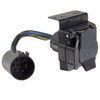

















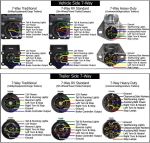
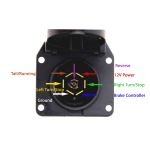
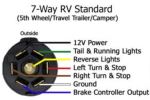
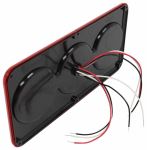
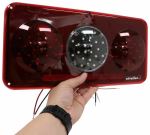
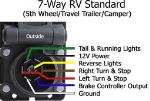

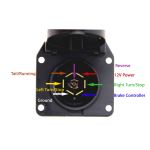

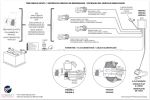
Paul P.
6/14/2021
Just fine. Thank you.